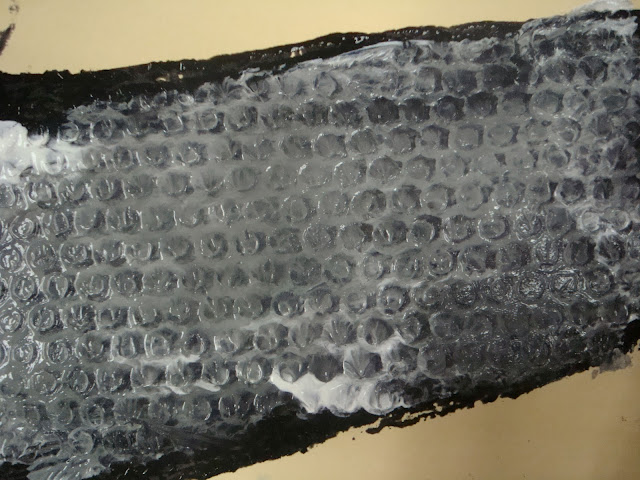Since returning from Winter Break our children have been incredibly interested in exploring music and creative movement. This post showcases this emerging inquiry over a span of almost four weeks.
One day one of our children brought in some hula skirts from home. They were so much fun to play with and the children asked if they could dance in them to some familiar songs we had sung during circle time.
A few days later we noticed that the children were still interested in dancing and asked if they would like to create some new costumes to wear. They eagerly began to create skirts using classroom materials such as tissue paper, found materials (ribbon, silk flowers), and paper.
We moved the mirrors from the drama center to our large communal carpet so the children could admire themselves and each other.
Curriculum originally anticipated being fulfilled by this inquiry:
1.1 recognize personal interests, strengths, and accomplishments (Personal/Social)
1.5 use language in various contexts to connect new experiences with what they already know (Language)
M2.2 demonstrate, through investigation, an awareness of non-standard measuring devices and standard measuring devices (Math)
2.1 participate actively in creative movement and other daily physical activities (Physical Education)
D1.1 demonstrate an awareness of personal interests and a sense of accomplishment in drama and dance (The Arts)
Over the next few days and once the costumes were ready there was much dancing to be done!
Many of the boys wanted to be a part of the excitement. Some created 'tickets' to be distributed for admission to the dancing show.
NS1:
begin to make use of one-to-one correspondence in counting objects and matching groups of objects (Math)
NS1: 10 explore different Canadian coins, using coin manipulatives
These boys were so interested in what was happening they brought over materials from the building center (where they had been playing) and participated in the show as an audience.
1.2 listen and respond to others for a variety of purposes (e.g., to exchange ideas, express feelings, offer opinions) and in a variety of contexts (Language)
The children decided that a proper show needed a stage and many pitched in to build one from our large wooden blocks.
1.6 use language to talk about their thinking, to reflect, and to solve problems (Language)
1.7 use specialized vocabulary for a variety of purposes (Language)
M2.3 demonstrate, through investigation, a beginning understanding of non-standard units that are the same type (e.g., straws, paper clips) but not always the same size (Math)
4.2 state problems and pose questions as part of the design process (Science)
There was much authentic math talk and problem solving as the children discussed how big the stage needed to be and how the blocks needed to fit together so no gaps were in it.
During one of Mrs. Bombardier's circles, she discussed with the children how music felt a certain way depending on the speed and sound of it. She encouraged them to listen to different kinds of music and visualize what it reminded them of. She also showed them that we could draw to music.
M2.1 explore different elements (e.g., beat, sound quality, speed, volume) of music (Arts)
M4.1 express their responses to music by moving, by making connections to their own experiences, or by talking about the musical form (Arts)
At this point in the inquiry many days had passed and the children were still interested in performing. The stage was moved to an area in the room where it could be made permanent (instead of being cleaned up for circle time) and we helped the children to construct a curtain.
4.4 select and use tools, equipment, and materials to construct things using the design process (Science)

Many of the children who take dance class shared their knowledge of costumes, movements, and shoes during our circle time discussions. The children decided they needed a choreographer to help plan and rehearse the movements, but weren't sure how to begin. We decided to search the internet for some dance performances (ballet, tap, jazz) to show the children. They were so excited to watch the performances and began to copy the movements. It was beautiful to watch and a great way to incorporate technology into the inquiry!
.2 demonstrate persistence while engaged in activities that require the use of both large and small muscles (Physical Education)
3.3 begin to demonstrate balance, whole- body and hand-eye coordination, and flexibility in movement (Physical Education)
D2.1 explore different elements of dram (e.g., character, setting, dramatic structure) and dance (e.g., rhythm, space, shape) (Arts)
D3.1 use problem-solving skills and their imagination to create drama and dance (Arts)

After seeing the fancy costumes and footwear in the performances, the children decided that they needed to make their own dance shoes. They searched the library for books on how to make shoes, and used classroom materials too.
4.2 state problems and pose questions as part of the design process (Science)
4.3 make predictions and observations throughout the design process (Science)
4.4 select and use tools, equipment, and materials to construct things using the design process (Science)
4.5 communicate and record results and findings after constructing things either individually or in groups (Science)
Ballet...
Tap...
We can't wait to see where this inquiry goes next!
Assessment included: checklists, anecdotal notes, photo and video documentation, child narrative, teacher interpretation






























































